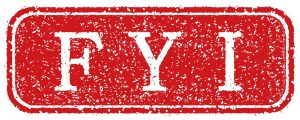
The term biohazard is used to refer to any kind of biological material, such as microorganisms, plants, animals, the byproducts of these as well as components and byproducts of the human body that pause health risks for other humans or animals. The term is usually scary for most of us, bringing to mind pictures of the large-scale contamination of natural waters or severe diseases caused by touching other people’s blood, such as infections with HIV or hepatitis.
However, we are exposed to biohazards all the time, for example from the surfaces we touch as we move around in our city or town, but our immune system is usually able to ward off most of the pathogens we encounter. Even though our immune systems are very strong, there are certain situations that require special attention and professional cleanup and contamination – here are some examples to illustrate those situations.
Human Blood and Bodily Fluids
Contact with human blood and bodily fluids is considered to be highly dangerous and so is the contact with any object contaminated with these fluids. There are various situations in which the handling of this type of biological material is inevitable, such as in laboratories where blood tests are performed or on crime scenes, but wherever they are encountered anyone handling these materials must observe the highest level of precautions. The people coming into contact with these materials must always wear suitable personal protective equipment and handle any containers or contaminated objects with the highest level of care and attention.
Animal Waste and Carcasses
According to biohazard cleanup Denver specialists, the excrement of animals, the body parts of animals or complete carcasses are also considered biohazards, especially in advanced states of putrefaction. The bedding materials and the sand or the granules used for absorbing animal excrement are also highly hazardous and need to be handled with maximum care. This rule applies for the households where owners handle the waste material loved by their pets as well as for farms where cattle, poultry, pigs or other animals are kept.
Sharp Waste
The term is used for referring to any material that has edges or that is pointed, such as surgical equipment, needles, glass slides or IV tubing. These materials need to be handled using special procedures and also disposed of among special circumstances.
Chemical Spells That Occur Among Commercial or Industrial Settings
Acid spills or the spills resulting from damage sustained by the containers used for holding hazardous materials are also considered biohazard. The neutralization and the elimination of these contaminations usually requires special techniques and special materials, therefore the processes can only be handled by professional biohazard cleanup companies.
Biohazard Levels
The Center for Disease Control has defined 4 levels of biohazards:
- level 1 – these are pathogens that pose minimal threats to animals and humans, such as common bacteria that we encounter day by day without even knowing it.
- level 2 – this type of biohazard material can cause severe illnesses and spread through contact with infected materials, such as hepatitis B or salmonella.
- level 3: these pathogens airborne and they can cause serious diseases.
- level 4 – these pathogens cause severe illness that there is no cure for, such as Ebola.
